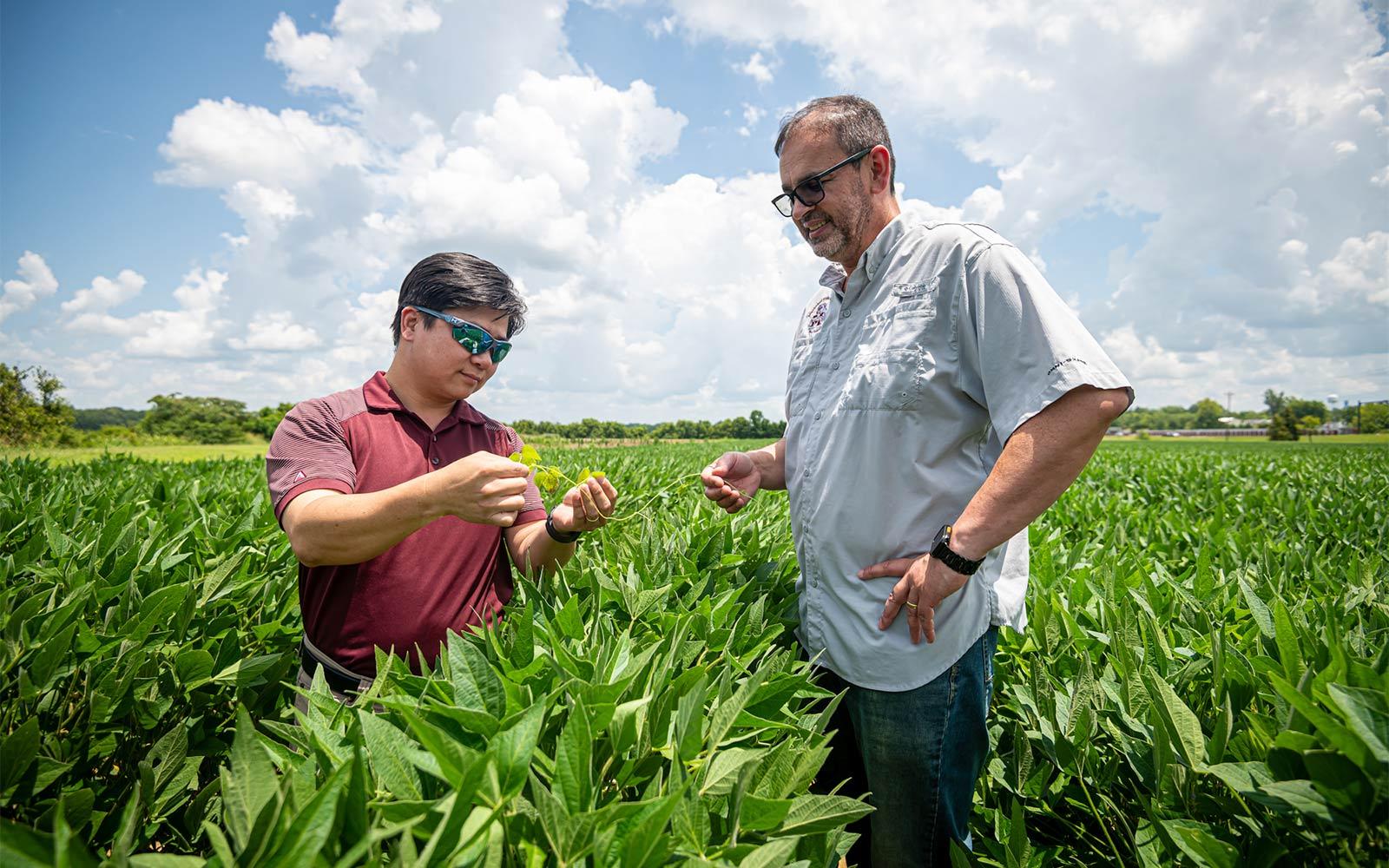Mississippi State scientists make progress against resistant weeds
Contact: Anslee Boyd
STARKVILLE, Miss.—Mississippi State is one of 10 land-grant universities leading a nationwide effort to combat herbicide resistant weeds threatening U.S. soybean production.
Supported by a $500,000 grant from the United Soybean Board, the Herbicide Resistance Monitoring Network, or HERMON, brings together researchers to monitor weed resistance evolution, develop faster, more consistent diagnostic protocols, and improve region-specific weed-management strategies.

Scientists in MSU’s Mississippi Agricultural and Forestry Experiment Station, or MAFES, are leading two of the HERMON project’s five major objectives—standardizing herbicide resistance diagnostics and investigating resistance to pre-emergent and post-emergent herbicides.
As part of the first objective, HERMON includes three regional hubs with specialized focuses. Mississippi State serves as the southern hub, concentrating on herbicide resistance in grasses common in southern soybean systems. Michigan State, the project lead, serves as the northern hub for broadleaf weed diagnostics, and the University of Arkansas specializes in Palmer amaranth. The three hubs share the goal of developing consistent nationwide diagnostic methods.
Luis Avila, Dr. Glover B. Triplett Endowed Chair and associate professor, and Paul Tseng, associate professor, both scientists in MSU’s Department of Plant and Soil Sciences, are leading the university’s contributions to the project.
“We are proud to contribute our experience in weed resistance diagnostics to this national collaboration,” Avila said. “As resistance issues intensify in the South, our team is working to advance diagnostics by testing grasses that are most problematic in southern soybean systems.”
Regarding weed response to both pre-emergent and post-emergent herbicides, past research has focused on post-emergent products, but HERMON will explore how weeds respond to pre-emergent herbicides and whether resistance to post-emergent herbicides also affects the performance of pre-emergent products with similar modes of action.
Tseng emphasized, “These tests, especially in the Amaranthus species, will determine pre- and post-herbicide interactions. Results will help producers select effective herbicide programs and improve long-term weed control.”
In addition to the regional hubs, HERMON includes researchers from Kansas State, Penn State, Purdue and Texas A&M universities, and the universities of Wisconsin, Illinois and Missouri. The collaboration’s scope reflects the scale of the problem. The United Soybean Board estimated herbicide resistant weeds cost U.S. soybean producers over $2 billion annually, highlighting the need for coordinated, research-driven solutions. The project also supports training for six graduate students and two postdoctoral researchers across the network who will help lead future weed resistance efforts.
“These efforts position Mississippi State as a vital part of a national strategy to address herbicide-resistant weeds,” Tseng said. “It’s a complex challenge but addressing it through regional expertise and national collaboration is promising for potential solutions.”
For more information on MSU’s Department of Plant and Soil Sciences, visit pss.msstate.edu; for more on MAFES, visit mafes.msstate.edu.
Mississippi State University is taking care of what matters. Learn more at www.msstate.edu.